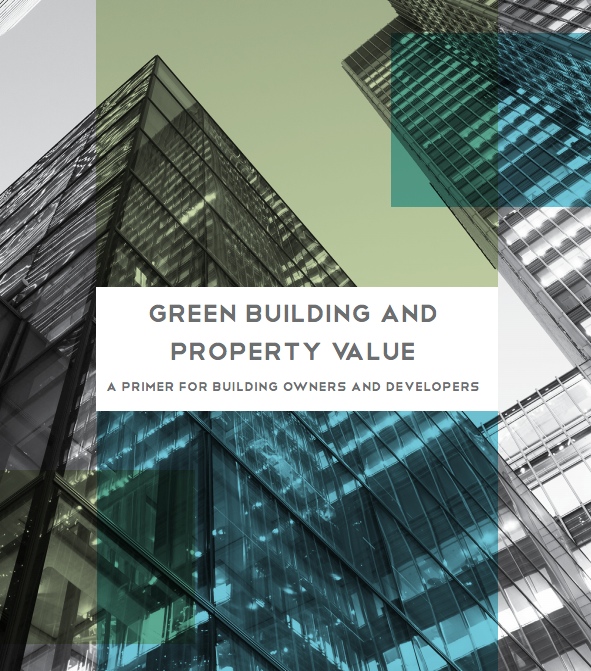
Building owners and developers who want to get the most market value from the investments they make in green building features are the intended targets of new recommendations published jointly by the Institute for Market Transformation and the Appraisal Institute.
Green Building and Property Value is directed at those about to retrofit an existing building as well as those planning to construct new buildings with high-performance energy features.
Property appraisals have been a hot button in the past for some homeowners who have fought with lenders and appraisers over setting market values for building features like solar panels and extra insulation. Appraised values on buildings affect bank loans, refinancing terms and, of course, resale values.
The report and its recommendations are directed toward large commercial properties, not individual homeowners. But some of the fundamentals may spill over into how residential market values are set.
“Because these buildings are different,” the primer says, “owners have had to change not only how they design, build and market, but also how they approach financing and construction processes. Otherwise, you may pay for green — with certifications, capital improvements, and marketing — and not fully realize the expected market benefits.”
A better understanding of the appraisal process means higher returns
The report suggests that understanding how appraisers set property values may help building owners get a better return on their investment. Appraisals, for example, “must be well-supported by market data and information,” the report says, and appraisers typically look at capital improvements, engineering reports, tenant retention rates and comparable sales data, among other things.
Comparable sales and leases, incomes and expenses, tenant demands, and cost data all are important, it says. Building owners in small markets may have more of an uphill fight in getting a healthy return on their green investments.
“The value of green buildings is better recognized by tenants and buyers in major metros,” the report says, “while emerging markets may require a value narrative matched to local conditions. Emphasize your marketability and enhanced operational cost savings and place your building in contest of other green buildings and opposite conventional peers.”
Where green buildings beat the rest of the pack
The report points to four key advantages that energy-efficient and green buildings have over the rest of the market — data that building owners can use to their advantage:
- Revenue. Tenants are increasingly willing to pay extra to rent space in green buildings. “For these tenants,” the report says, “leasing green space is an opportunity to demonstrate a commitment to sustainability, attract the best employees, and improve productivity.” The report cites studies which have consistently found that Energy Star and LEED-certified buildings get rental premiums, more than 25% in one 2009 study.
- Occupancy. If building owners can show that green features mean higher occupancy rates, “a significant argument can be built for increases in value.” When tenants stick around, there are fewer lost rents and lower retrofit costs.
- Operating expenses. Lower utility bills are “the most straightforward value proposition of owning a green building,” the study says. Higher energy efficiency reduce operating expenses while increasing net operating income. When building owners pay the utility bills, even small savings become important when building values are established.
- Risk. High-performance buildings are less likely to be affected by changing consumer preferences, higher energy prices, and new legislation. “Best-in-class market position can future-proof assets,” according to the study.
The report also makes recommendations on how to use internal valuations, how to deal with appraisers and lenders, and how to evaluate the possible downsides of investments in green features and energy efficiency.
Other steps the Appraisal Institute is taking
The Appraisal Institute says its recent collaboration with the Institute for Market Transformation, a Washington-based nonprofit, is one of several steps it has taken to make appraisals of green properties more accurate. Since 2008, the Institute says, it has offered more than 380 programs on valuation that have attracted more than 5,100 attendees.
In February 2013, the Institute added a segment on solar power to its professional development program on valuation of sustainable buildings. And in March of last year, the institute updated an optional addendum that appraisers can use on the a common appraisal form for green features.
The institute says it will release a new book on the topic this year, Residential Green Valuation Tools, by Sandra Adomatis.
An article in National Mortgage Professional magazine lists other steps the Appraisal Institute has taken.
Weekly Newsletter
Get building science and energy efficiency advice, plus special offers, in your inbox.














One Comment
Great topic
Our discussion group is trying to find an appraiser willing to be the subject of abuse for a crowd of mildly intoxicated building science enthusiasts for our next session. I sympathize with appraisers - they're just responding to the market, or some perceived section of it. And they live and die by comps; hopefully finding them will keep getting easier, but it's often hard to find one within the fairly narrow range they're supposed to use.
Log in or create an account to post a comment.
Sign up Log in